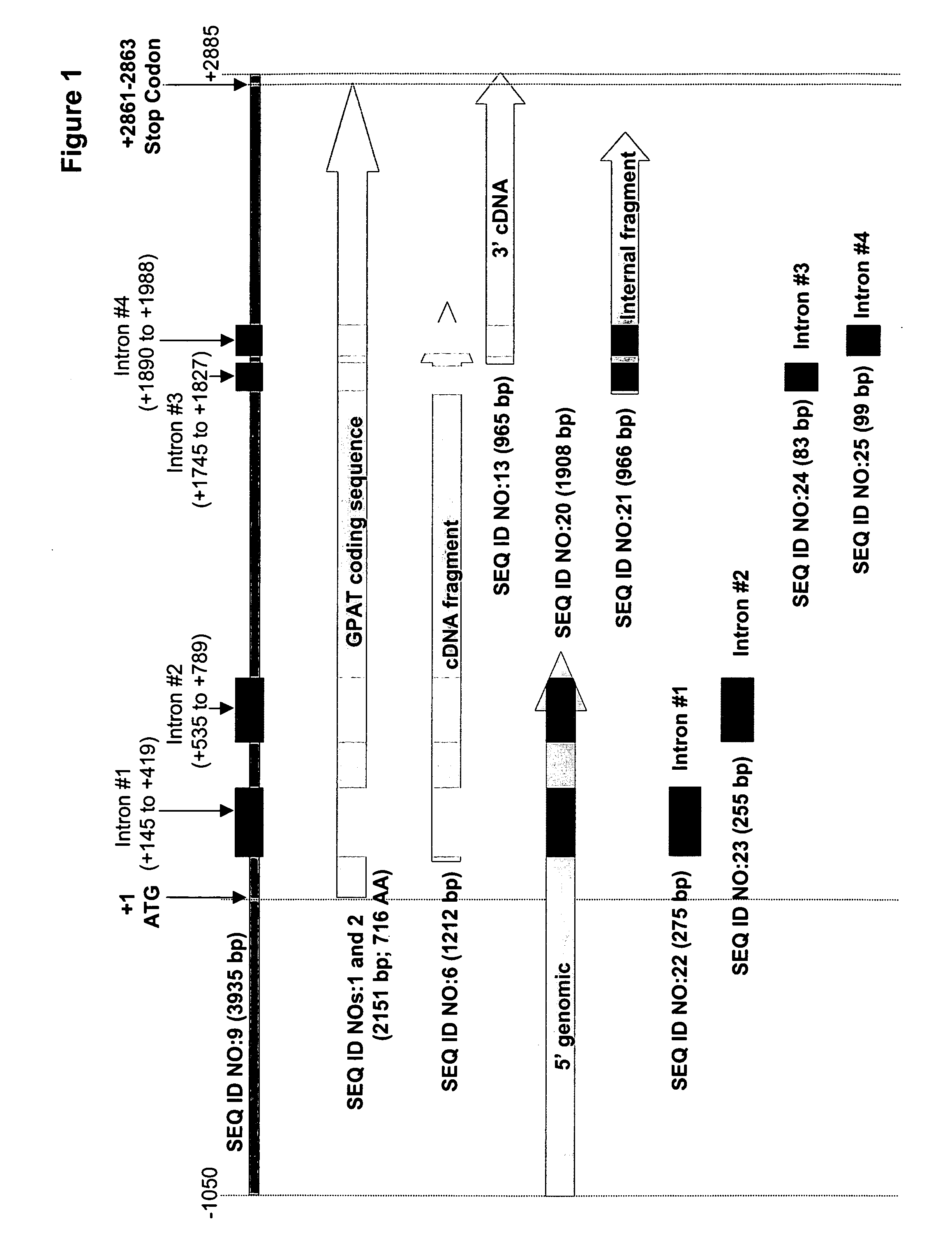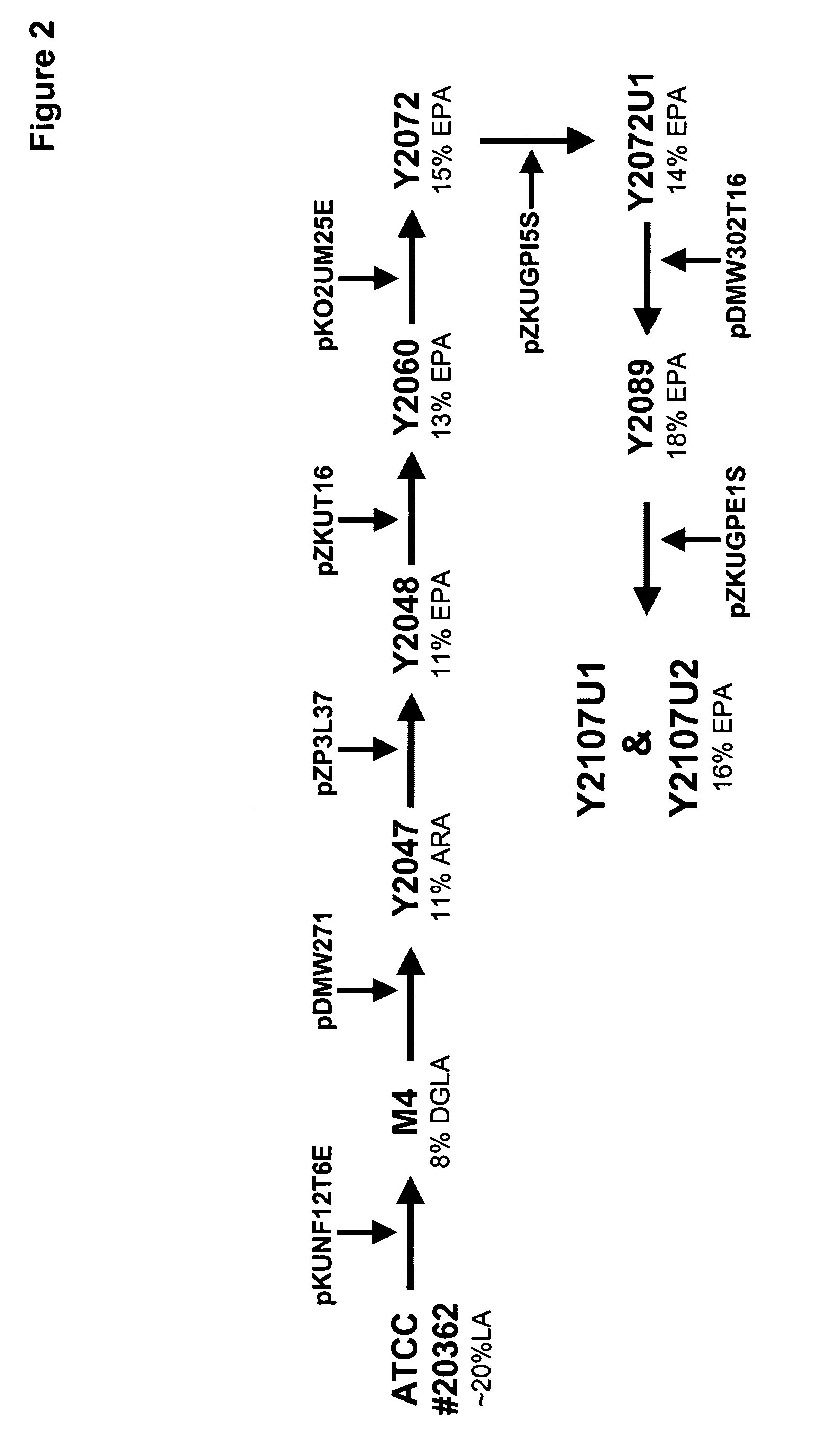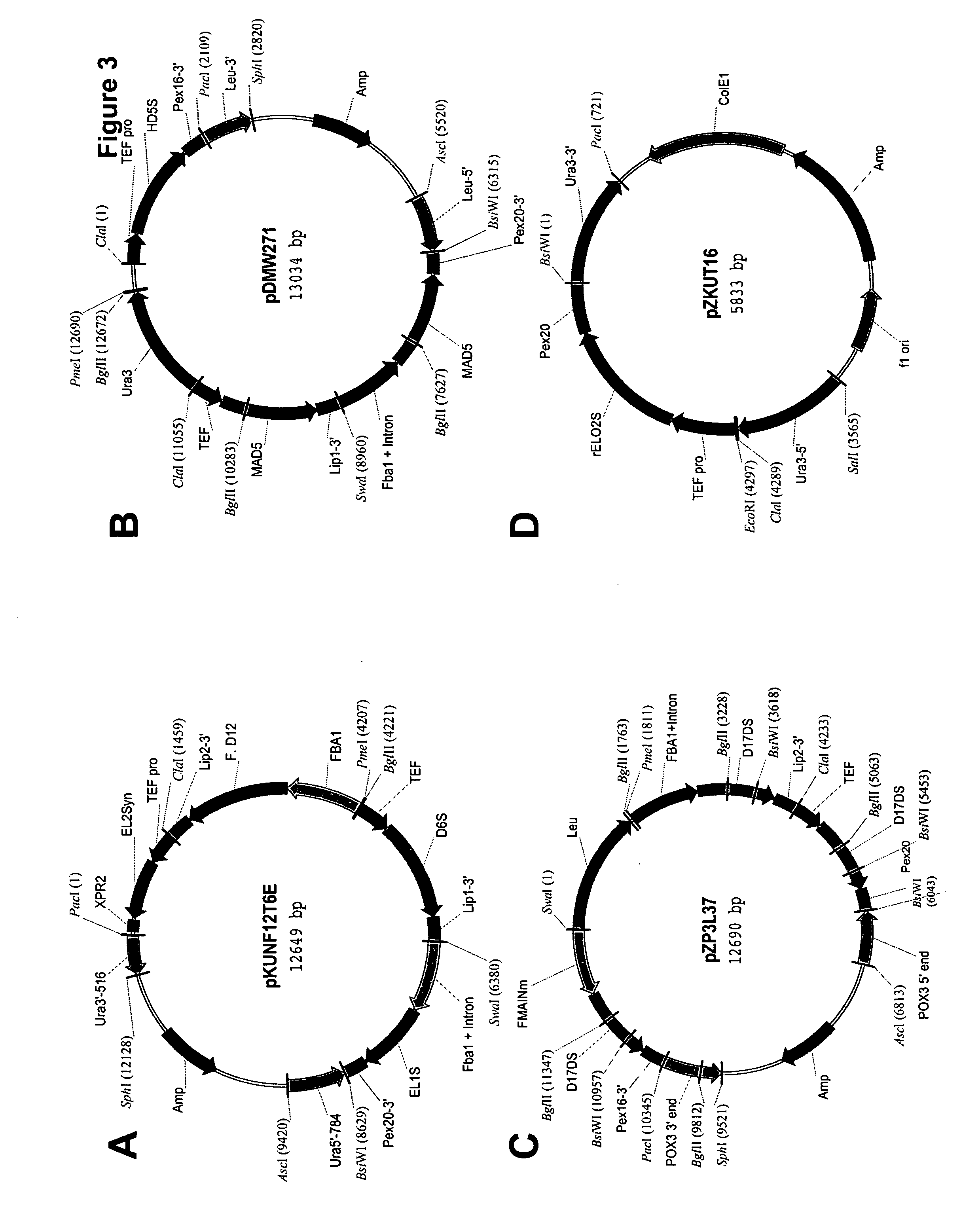Mortierella alpina glycerol-3-phosphate o-acyltransferase for alteration of polyunsaturated fatty acids and oil content in oleaginous organisms
a technology of glycerol-3-phosphate and acyltransferase, which is applied in the field of biotechnology, can solve the problems of limited sequence information (either nucleotide or protein) of gpat genes, difficult characterization of different gpat isoforms,
- Summary
- Abstract
- Description
- Claims
- Application Information
AI Technical Summary
Benefits of technology
Problems solved by technology
Method used
Image
Examples
example 1
Preparation of Mortierella alpina Genomic DNA and cDNA
[0168] The present Example describes the preparation of genomic DNA and cDNA from Mortierella alpina (ATCC #16266).
Preparation of Genomic DNA from Mortierella alpina
[0169] Genomic DNA was isolated from Mortierella alpina (ATCC #16266) using a QiaPrep Spin Miniprep Kit (Qiagen, Catalog #627106). Cells grown on a YPD agar plate (2% Bacto-yeast extract, 3% Bactor-peptone, 2% glucose, 2.5% bacto-agar) were scraped off and resuspended in 1.2 mL of kit buffer P1. The resuspended cells were placed in two 2.0 mL screw cap tubes, each containing 0.6 mL glass beads (0.5 mm diameter). The cells were homogenized at the HOMOGENIZE setting on a Biospec (Bartlesville, Okla.) mini bead beater for 2 min. The tubes were then centrifuged at 14,000 rpm in an Eppendorf microfuge for 2 min. The supernatant (0.75 mL) was transferred to three 1.5 mL microfuge tubes. Equal volumes of kit buffer P2 were added to each tube. After mixing the tubes by in...
example 2
Cloning of a Partial Putative GPAT Sequence from Mortierella alpina
By PCR Using Degenerate PCR Primers
[0175] The present Example describes the identification of a cDNA fragment (SEQ ID NO:6) encoding a 3′ portion of the M. alpina GPAT (provided herein as SEQ ID NOs:1 and 2) by degenerate PCR using M. alpina cDNA as template (from Example 1).
[0176] Based on sequences of GPAT from Aspergillus nidulans (GenBank Accession No. EAA62242) and Neurospora crassa (GenBank Accession No. XP—325840), the following primers were designed for degenerate PCR:
MGPAT-N1(SEQ ID NO:7)CCNCAYGCNAAYCARTTYGTMGPAT-NR5(SEQ ID NO:8)TTCCANGTNGCCATNTCRTC[Note: The nucleic acid degeneracy code used forSEQ ID NOs:7 and 8 was as follows: R = A / G;Y = C / T; and N = A / C / T / G.]
[0177] PCR amplification was carried out in a Perkin Elmer GeneAmp 9600 PCR machine using TaKaRa ExTaq premix Taq polymerase (TaKaRa Bio Inc., Otsu, Shiga, Japan). Amplification was carried out as follows: 30 cycles of denaturation at 94° C. f...
example 3
Isolation of the Full-Length GPAT Sequence from Mortierella alpina
[0179] Based on the sequence of the 1212 bp cDNA fragment, the 5′ and 3′ end regions of the M. alpina GPAT were cloned by PCR amplification and genome walking techniques. This enabled assembly of a contig, corresponding to the −1050 bp to +2885 bp region of the M. alpina GPAT (SEQ ID NO:9). This contig included the entire coding region of GPAT and four introns (SEQ ID NOs:22, 23, 24 and 25).
PCR Amplification of the 3′-End of GPAT ORF
[0180] The M. alpina cDNA sample described in Example 1 (1 μl) was used as a template for amplification of the 3′-end of the GPAT. Primers MGPAT-5N1 (SEQ ID NO:10) and CDSIII / 3′ (SEQ ID NO:4) were used as primers. PCR amplification was carried out in a Perkin Elmer GeneAmp 9600 PCR machine using TaKaRa ExTaq premix Taq polymerase (TaKaRa Bio Inc., Otsu, Shiga, Japan). Amplification was carried out as follows: 30 cycles of denaturation at 94° C. for 30 sec, annealing at 55° C. for 30 se...
PUM
| Property | Measurement | Unit |
|---|---|---|
| Temperature | aaaaa | aaaaa |
| Fraction | aaaaa | aaaaa |
| Fraction | aaaaa | aaaaa |
Abstract
Description
Claims
Application Information
 Login to View More
Login to View More - R&D
- Intellectual Property
- Life Sciences
- Materials
- Tech Scout
- Unparalleled Data Quality
- Higher Quality Content
- 60% Fewer Hallucinations
Browse by: Latest US Patents, China's latest patents, Technical Efficacy Thesaurus, Application Domain, Technology Topic, Popular Technical Reports.
© 2025 PatSnap. All rights reserved.Legal|Privacy policy|Modern Slavery Act Transparency Statement|Sitemap|About US| Contact US: help@patsnap.com



